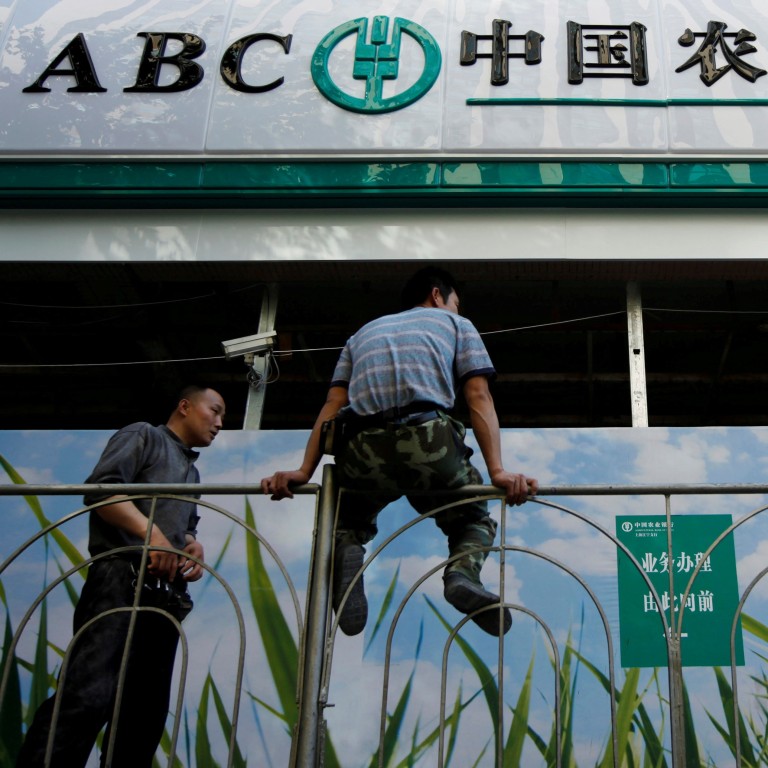
China intends to boost bank dividends with proposed cap on bad loan provisions, but will this backfire?
- China’s Finance Ministry has proposed a new rule that would cap the amount banks have to set aside for bad loans
- Loan loss provisions should not exceed twice of the minimum regulatory level with any excess funds released as profits
China’s Finance Ministry has proposed a new rule that would cap the amount banks have to set aside for bad loans, a move that could boost dividends to shareholders but weaken banks' capabilities to absorb losses in the future.
The minimum loan loss provision is currently set at 150 per cent of impaired loans - in other words, a bank has to set aside 1.5 yuan (0.21 US cents) for every 1 yuan (0.14 US cents) of loan losses it expects. The proposed new rule would cap the loan loss reserve ratio at 300 per cent.
Virtually all Chinese banks already set aside more money than the required minimum to project an image of trustworthiness. At the end of June, at least seven listed Chinese banks had loan loss provisions of more than double the amount regulators required, according to their interim reports released by stock exchanges.
The Agricultural Bank of China, one of the country’s big four state-owned banks, has a provision coverage ratio of 278 per cent, while Bank of Ningbo set aside 522 per cent, and China Merchants Bank and the Postal Saving Bank of China had provision coverage ratios of about 400 per cent.
The ministry is seeking public comment on the proposed changes until October 26. If implemented as currently drafted, the changes would have a have a lasting impact on Chinese banks’ balance sheets.
The proposal has already triggered debate about whether it would increase financial instability in the banking sector.
Wang Yifeng, an analyst at Everbright Securities in Beijing, wrote in a note that the proposal may amplify “pro-cyclical” risks as banks look to boost profits at the expense of safety provisions.
Setting aside funds for bad loans is integral to China’s prudential banking regulations and is intended to protect the bank’s core capital. But it is not uncommon for Chinese banks to cover up loan risks and underestimate possible losses.
While excess provisioning can indicate prudent bank management, China’s Finance Ministry is wary that it could be a way for banks to hide profits in a bid to dodge taxes and dividends.
The proposed rule, which would force banks to pay more dividends to their shareholders, who are mainly fiscal authorities, comes as Chinese governments at all levels are anxious to generate higher revenues. Business and consumer tax cuts, a cooling property market, and a push for infrastructure spending have all drained government coffers.
China’s fiscal revenues in the first eight months of the year rose only 3.2 per cent to 13.7 trillion yuan (US$1.9 trillion), compared to year earlier, official data shows. Profits at Chinese banks showed stronger growth, up 6.5 per cent in the first half of the year, compared to a year earlier, to 1.13 trillion yuan (US$158 billion), according to data released by China’s banking regulator.

